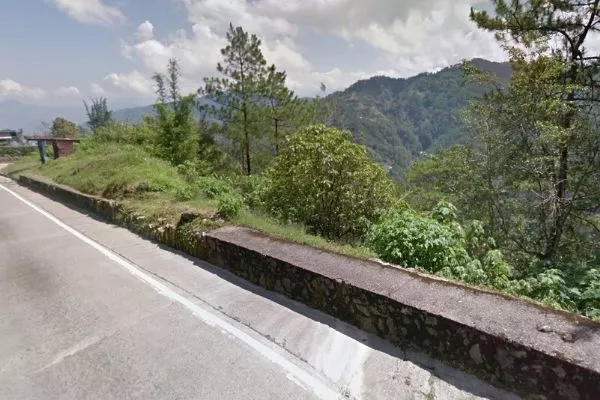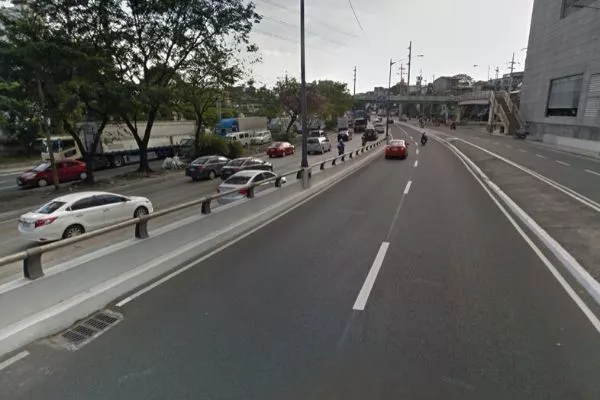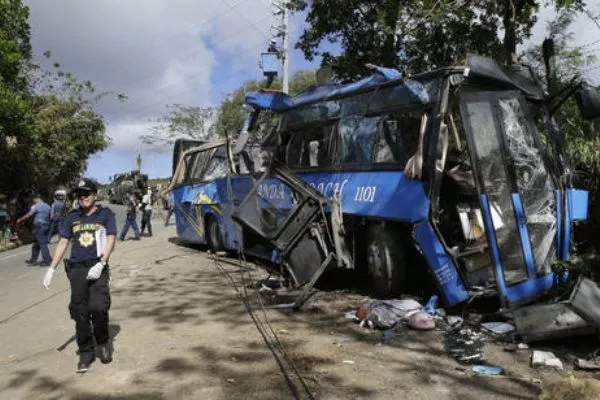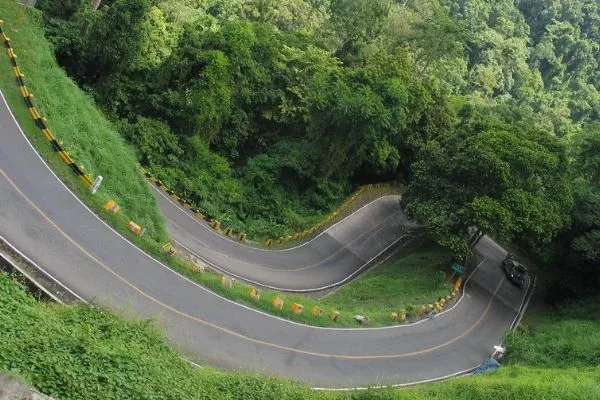As with any undertaking, be it having a baby, buying a new car, going on a vacation to a location you haven’t visited before, or even when choosing a coffin, research and knowledge is half the battle.
This is also very true when it comes to driving on unfamiliar roads here in the Philippines because we’re fairly certain that you, our dear reader, most likely haven’t had the opportunity to scour the entire Philippine’s drivable roads (but if you did, then kudos to you).
Now we say “unfamiliar” because some thoroughfares in the Philippines WILL take you on the wild ride of surprise. And sometimes, its the surprise that'll do you in. So what kind of roads are we talking about? Well, these are some of the scariest that the Philippines has to offer. Scary in the sense that they might be actual grim reapers in cement and asphalt form.
1. Top 10 dangerous road in the Philippines
#1. Halsema Highway, Cordillera
Cars, roads, and mountain ranges are often a dangerous mix. One such example is the Halsema Highway. A highway that leads from Baguio to the more remote areas in the Cordilleras.
It’s a lengthy road at 150 kilometers long with a lot of curves, descents, and ascents. Halsema’s several portions are also flanked by sheer drops which will give you that inexplicably tingly feeling you get whenever you stare at heights.

Halsema passes through several valleys hence the spectacular views. Don't get too distracted though
On top of that, this road also sees landslides on the regular. This is despite being paved back in 2011 by the way. Also, a driver’s visibility may also become impaired as this part of the Cordilleras are prone to be covered by thick blankets of fog.
Regardless of its accident-prone nature, the terrain surrounding Halsema is breathtaking. Just don’t too distracted though.
>>> Read more: Top 5 most accident-prone roads and highways in Metro Manila
#2. Trans Central Highway, Cebu
Like the Halsema highway, the Trans Central Highway located in Cebu is dangerous due to the abundance of jagged rocks hanging on steep slopes along its length, as well as the numerous stretches of descending and ascending portions.

Cebu has less mountainous areas but this road is by no means less dangerous
As recent as September 15, 2019, a van full of tourists on their way to a mountain resort located in Balamban was involved in an accident. Luckily, no one died and the 12 people involved in the crash merely suffered injuries.
#3. C-5 Road, Metro Manila
The C-5 road which stretches from Taguig to Quezon City is no stranger from car crashes. In fact, up to 55% of the road’s casualties are connected to “negative vehicle to vehicle interface”, aka a car.

A portion of the C5 road in-front of SM Aura
According to the Metropolitan Manila Development Authority or MMDA, the C5 averaged up to 27 deaths in 2018, and an average of 8,252 road accidents during the same period.
Other dangers that can be found on C5 are people throwing rocks at cars, caltrops or road spikes, and poor visibility at night.
Accident-prone areas along the C-5 road include;
- C.P. Garvia Ave. – Pansol – Magsaysay Ave.
- SM Aura – Market! Market!
- Ateneo de Manila – Miriam College
- Bagong Ilog – Mazda Motors Pasig
- Katipunan Ave./C-5 Intersection
>>> Related post: Road Accidents in the Philippines: Causes, Facts & Latest Statistics
#4. Sampaloc Road, Tanay, Rizal
While not as mountainous as the others on this list, the Sampaloc road is also a dangerous road by nature of its sharp curves, numerous blind spots, and the lack of some road safety features in some portions.
There’s also this very interesting geographical feature called the “Magnetic hill” which earns this name due to the optical illusion caused by the layout of the surrounding land which manifests as a “pulling” force which makes, for example, a car roll uphill. Cue the X-files theme.
While we’re not really sure that this phenomenon has caused the numerous car accidents in the Philippines on this road but some other folks are assuming that it is indeed a factor.
In the case of the thoroughly televised 2017 Tanay bus accident where 14 passengers and the driver lost their lives, it was determined that faulty brakes were the cause.

Double-check your brakes EVERYTIME YOU HEAD OUT! Especially you public transport drivers
#5. Old Zigzag Road, Atimonan, Quezon
As evident form the name itself, this particular road located in Atimonan, Quezon Province runs through a mountain and consists of a series of very sharp curves. This is especially true with the portion known as “bitukang manok” which as the name implies, looks like the twists of an “Isaw.”

On the other hand, it looks like a nice spot to be driving a Mazda MX5 or a Toyota 86...
Being the gateway between Southern and Northern Quezon, the Old Zigzag Road is a heavily used route. As a result, drivers are indeed forced to rely on engine braking in conjunction with their brakes to control their downhill speed and equip yourself necessary steps to safely drive through sharply curved roads.
#6. Mangima Road
The Mangima road is a part of the Sayre highway which takes its name from the attractive looking Mangima rock abundant in the region.
Like the Old Zigzag road in Quezon province, Mangima road is host to a number of sharp curves, sharp ascents (if you’re heading to Cagayan de Oro) and an equally scary descent (if you’re heading deeper into Bukidnon).
Apart from those hazards, the place also gets a regular coverage of fog, the usual landslides, and several portions of sheer drops.
#7. Iligan City to Marawi Road
While there are indeed also cases of vehicular accidents along the Iligan – Marawi road, this particular road’s name to fame is the number of ambushes that have occurred along its length. There’s that time when a soldier was killed and seven others were wounded in Pantar town, Lanao del Norte and also that time when a crew of news reporters was ambushed by motorcycle gunmen.
While gunmen are always dangerous, there’s also a particular part of this stretch called Overton which is a downhill section flanked on its Marawi-bound side with steep drops. Another thing compounding the potential driving hazards on this road is the fact that there are portions that are poorly lit.

Note also that Overton is the kind of road where tricycles and passenger cars often mix
#8. Commonwealth
Known by many “highway to hell,” Commonwealth avenue has a lot going for it in terms of upping the risk factor for many motorists. There are seemingly suicidal jaywalkers, equally suicidal speeders, distracted drivers on their phones, and most of the times, very erratic jeepneys.
Of course, we can’t help but mention Tandang Sora Avenue where almost 80 traffic incidents occurred in 2017.
3 injured in a road accident in Commonwealth Ave, Quezon City
>>> You might like to read: 8 haunted places in the Philippines that you don't want to drive through
#9. Shaw Boulevard
Shaw Boulevard is a 5.2 kilometer stretch of highway linking together Pasig city and Mandaluyong city and it serves as a pathway for a lot of jeepney routes, is home to many malls, and hosts some of the busiest intersections in Metro Manila.
The result? A kind of road where you have to be on your toes, always keeping watch on your car’s mirrors, and being a careful, level-headed driver all the time. That is ideal and isn’t the case with most people especially on this road where stress levels are ALWAYS high and motorists are always on the hurry.

The Shaw five-vehicle pile-up on October 5, 2019
As recently as a few months ago, Shaw saw a five-vehicle pile-up resulting in one death and a few injuries. On December 29 last year, s motorcycle rider lost his life when he collided with an SUV in the wee hours of the morning.
#10. EDSA
Finally, the crown jewel of traffic and road accidents by sheer number; EDSA or the Epifanio de Los Santos Avenue. In 2017 alone, EDSA saw a staggering 12,635 cases of road crashes. In 2018, EDSA had a total of 21 road deaths, many of which were “self-inflicted.”
According to the MMDA, EDSA averages a total of 23 vehicular accidents per day. That figure was based on 2017 statistics and we’re fairly certain that the number has increased since then.

With this kind of traffic, we aren't surprised by that kind of figure
>>> Worth to note: EDSA Traffic Advisory: Peak hours, Rules, Estimated travel time & more
2. Dangerous road in the Philippines: Conclusion
While the roads we’ve listed here, statistically speaking, are indeed hazardous, we can also argue that any road can be dangerous due to some reason or another. To keep the list of possible causes of a car accident low, we highly recommend following the Land Transportation’s BLOWBAGETS mnemonic device and of course, being observant and patient whilst you’re stuck in traffic or when driving.
If you want to expand your knowledge about cars further than knowing how to drive, then keep following us at Philkotse.com.
Recent posts
- [Philkotse collection] Driving horror stories: Make sure you're ready! Nov 30, 2022
- Foggy Roads: How to Handle Danger Zones Nov 30, 2022
- Night-driving: Why it is the Most Dangerous Time to be on the Road? Feb 03, 2020
- Top 10 car accidents which have never been unraveled (Part I) Aug 09, 2018
- Top 10 car accidents which have never been unraveled (Part II) Nov 15, 2022












